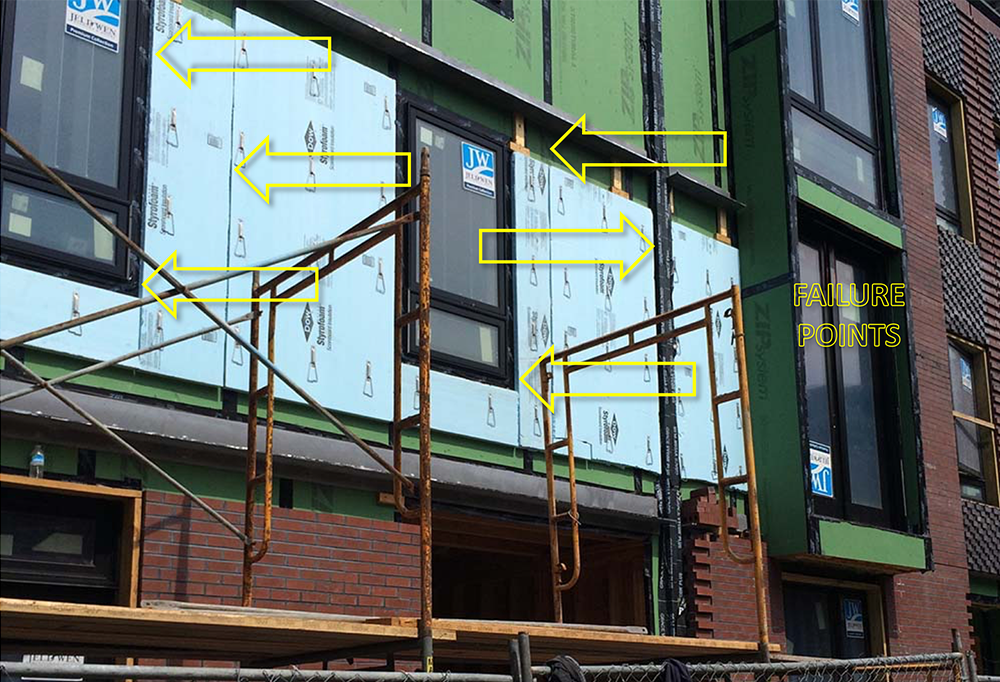Boosting Building Energy Efficiency Standards: Installation, Inspection and Enforcement
Improving Building Energy Efficiency Standards is Just Part of the Solution
Insulation can dramatically reduce energy consumption and provide significant savings over the lifetime of most buildings. But just improving building energy efficiency standards relating to insulation isn't enough. It has to be installed correctly to profit its much-vaunted benefits, and that makes inspection and enforcing those standards doubly important.
In fact, many new building and major renovation projects never reach their true savings potential because installation mistakes are so common. Add to that a lack of effective inspection standards, and you have spotty application of what could be a much more beneficial energy product. In worst-case scenarios, health issues and structural problems can even result. In effect, that means that the enhanced building energy standards can be rendered useless and even hazardous.
Many new building codes stipulate that insulation be installed in a continuous layer on the exterior of buildings. Builders must cover the entire outside of structures with a thermal jacket rather than just insulating internal voids. At this point, a trove of data shows that the benefits of such an updated application can be profound-if installed correctly.
The problem is that problems can arise at several critical junctures in any insulation installation. Tiny voids and air gaps anywhere in the materials can become energy super highways. That's because one of the leading causes of energy flow in and out of buildings is air pressure differentials.
In summer, most buildings have a positive pressure relative to the outdoors. In winter, heating spaces reverses that scenario. That means that even just a 1/8" gap between insulation panel can result in air rushing 10 feet behind an entire exterior section of wall. What seems like a minor mistake made by a distracted contractor results in serious repercussions on the overall performance of the building.
Based on nearly a decade of engineering deep energy savings projects, I believe that enhanced building energy efficiency standards for insulation are not enough. Without more rigorous insulation inspection standards and resolute enforcement, we simply will not be able to achieve the level of efficiency needed to have a real, meaningful impact on climate change.
Solutions: Monitoring, New Tools, and Inspection Standards
Solutions: Monitoring, New Tools, and Inspection Standards
Monitoring: As an energy upgrade expert, I can say without a doubt that follow-up monitoring is just as important as training installers and contractors. Sure, installing sheets of installation and then sealing and taping every seam on the exterior of a building of any size is time-consuming and laborious. Areas around windows present a particularly challenge, where fitting corners and sealing around angles and details presents almost endless opportunities to miss problems while hurrying to "just get it done."
The unfortunate reality is that on most job sites, I've noticed a distinct different between results depending on how much I was on site versus off. The solution I found in hindsight was to conduct occasional, unannounced inspections. Doing so almost always indicated that my own standards were not necessarily being upheld.
And that was only on projects where my own mandate included follow through to inspections and beyond. When I was only hired to write specifications, it was ultimately out of my hands. As a result, even if the project met the new building energy efficiency standards on paper, the actual application ended up being a waste of the building owner's funds-and energy.
Continuous Inspection: With the introduction of each successive generation of GoPro-type "point-of-view" cameras, video documentation of project process and adherence to standards get easier and easier. Now video records of each plane or side of a building is increasingly essential to achieve the necessary level of quality control. And while new contractors are often resistant to this kind of rigor, documentation can serve as valuable forensic evidence if and when problems arise in the future. Typically, the reconsider their objections when they understand the liability associated with condensation and mold.
Inspection Tools: Current standards for thermal scanning and pressurization testing are not adequate or effective for most commercial buildings. The not insignificant temperature differentials needed for thermal scans simply are not available year-round. Additionally, pressurization is challenging in any large building, which means that results are almost never uniform.
New density measuring tools for assessing insulations voids are needed immediately. A number of ultrasonic devices designed for other applications show promise for surveying large areas and identifying gaps insulation, but cost-effectiveness and reliability remain an issue.
Inspection Standards: Even before the introduction of new building energy efficiency standards, most building inspectors were over-burdened. And with each successive wave of innovation, the gap between codes and the promise of new technology only widens.
Yet still, the nature of inspectors' jobs requires them to be overly fixated on worst-possible-case scenarios: roofs blowing off in mega-gales and fire evacuation planning and protocol. Given the nuances at work in effective installations, a separate inspector certification for insulation and weatherization is needed. Liability insurance for inspectors in the field should also be a requirement.
In my experience in Boston, the need for an insulation-specific certification is self-evident and supported by the building industry and city inspectors. And while talk of insurance ruffles everyone's feathers, think of the costs associated with things like mold abatement and structural damage. From lost productivity to removing entire sections of building interiors and/or exteriors, things approach the million-dollar mark almost immediately.
Building energy efficiency standard enhancements are always a step in the right direction. But unless we see through those advancements to the utmost, we're really only taking two steps forward and one step back. Realizing the true potential of things like effective insulation deployment carries with it so much promise. It might take a while to get everyone on board and up to speed, but in the end the results will speak for themselves.


